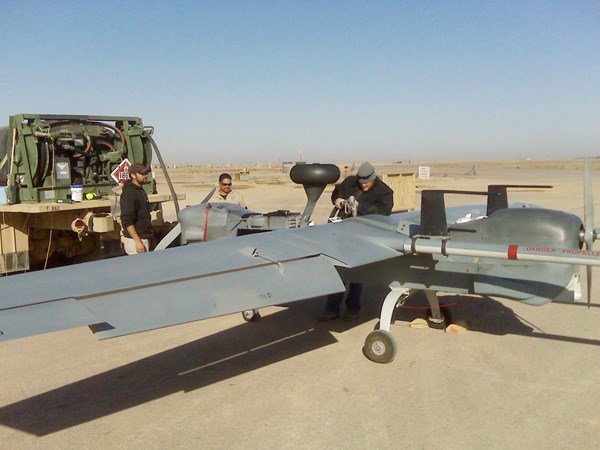HERNDON, Va., May 15, 2009 (GLOBE NEWSWIRE) -- Northrop Grumman Corporation's (NYSE:NOC) Hunter Unmanned Aircraft System (UAS), in use with the U.S. Army since 1996, recently surpassed 75,000 flight hours in service, 50,000 of which were flown in combat.
A photo accompanying this release is available at: http://media.globenewswire.com/noc/
The MQ-5B Hunter, which is currently deployed in the Global War on Terrorism, provides warfighters with state-of-the-art reconnaissance, surveillance, target acquisition (RSTA), communications relay, and weapons delivery.
"Not only is Hunter a workhorse for the Army, but it's also a proven combat multiplier that continues to provide our warfighters with actionable intelligence," said Dave Werkheiser, vice president and general manager of the Life Cycle Optimization and Engineering Group for Northrop Grumman's Technical Services sector. "What makes the Hunter program so special is that we serve shoulder-to-shoulder with the great men and women in the Army keeping Hunter mission capable. Also, Hunter has proven to be an extremely adaptable and a highly reliable platform that has been spirally enhanced for both performance and payload capability."
The RQ-5A Hunter was the Army's first fielded UAS. The MQ-5B is the next-generation Hunter, continuing a legacy of service to Army corps, division and brigade warfighters. Flying over the battlefield with its multi-mission optronic payload, the MQ-5B gathers RSTA information in real time and relays it via video link to commanders and soldiers on the ground.
The MQ-5B Hunter is distinguished by its heavy fuel engines (a U.S. Department of Defense first), its "wet" (fuel-carrying) extended center wing with weapons-capable hard points and a modern avionics suite. The MQ-5B Hunter system uses the Army's One System ground control station and remote video terminal. It also carries a communications relay package to extend the radio range of warfighters. A differential GPS automatic takeoff and landing system is under development for Hunter.
"The benefit of Hunter to our warfighters is obvious," said Karl Purdy, Northrop Grumman Technical Services' program manager. "Our service men and women serving in theater can rest a bit more comfortably with Hunter in the field as it has continuous 'eyes' over the battle space. Hunter has recently been projected as an important part of the Army's UAS capability until 2025. This flight performance milestone would not be possible if not for the hard work of a team that continues to operate and maintain this system with unparalleled expertise."
The MQ-5B features a robust, fixed-wing, twin tail-boom design with redundant control systems powered by two heavy fuel engines -- one engine to "push" and another to "pull" the air vehicle. Another Hunter capability is its relay mode that allows one Hunter to be controlled by another UAV at extended ranges or over terrain obstacles typical of those found in the Balkans and Afghanistan.
To replace obsolete systems, increase readiness and reduce the logistics burden on soldiers, Northrop Grumman integrated a new suite of avionics for Hunter, including upgraded flight and mission computers, an auxiliary power distribution unit, the LN-251 inertial navigation system with GPS, a downsized data link system, and an APX-118 IFF transponder. The avionics suite improves performance by reducing size, weight, and power consumption of the equipment used to control the aircraft and manage its critical subsystems.
Northrop Grumman Corporation is a leading global security company whose 120,000 employees provide innovative systems, products and solutions in aerospace, electronics, information systems, shipbuilding and technical services to government and commercial customers worldwide.
